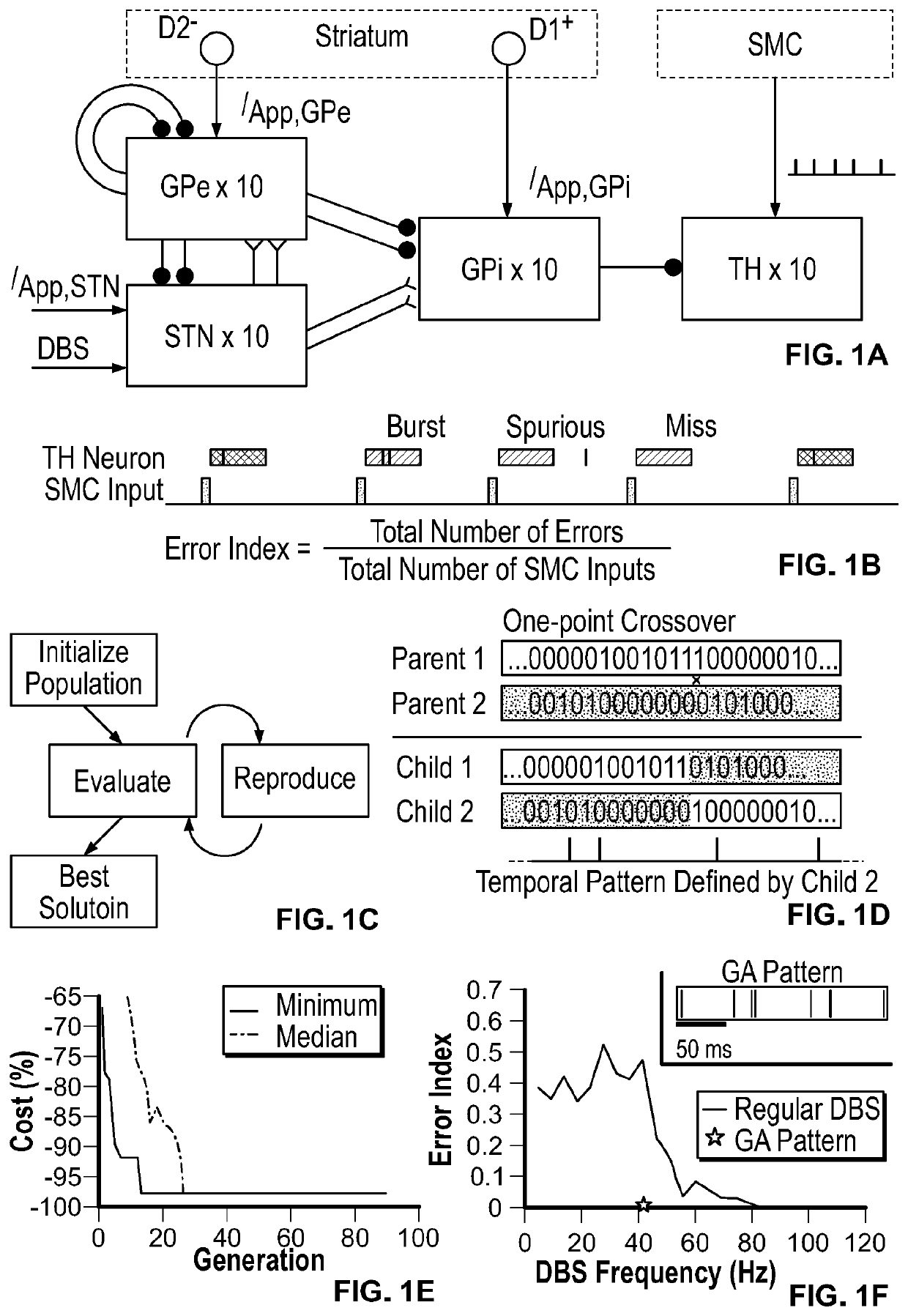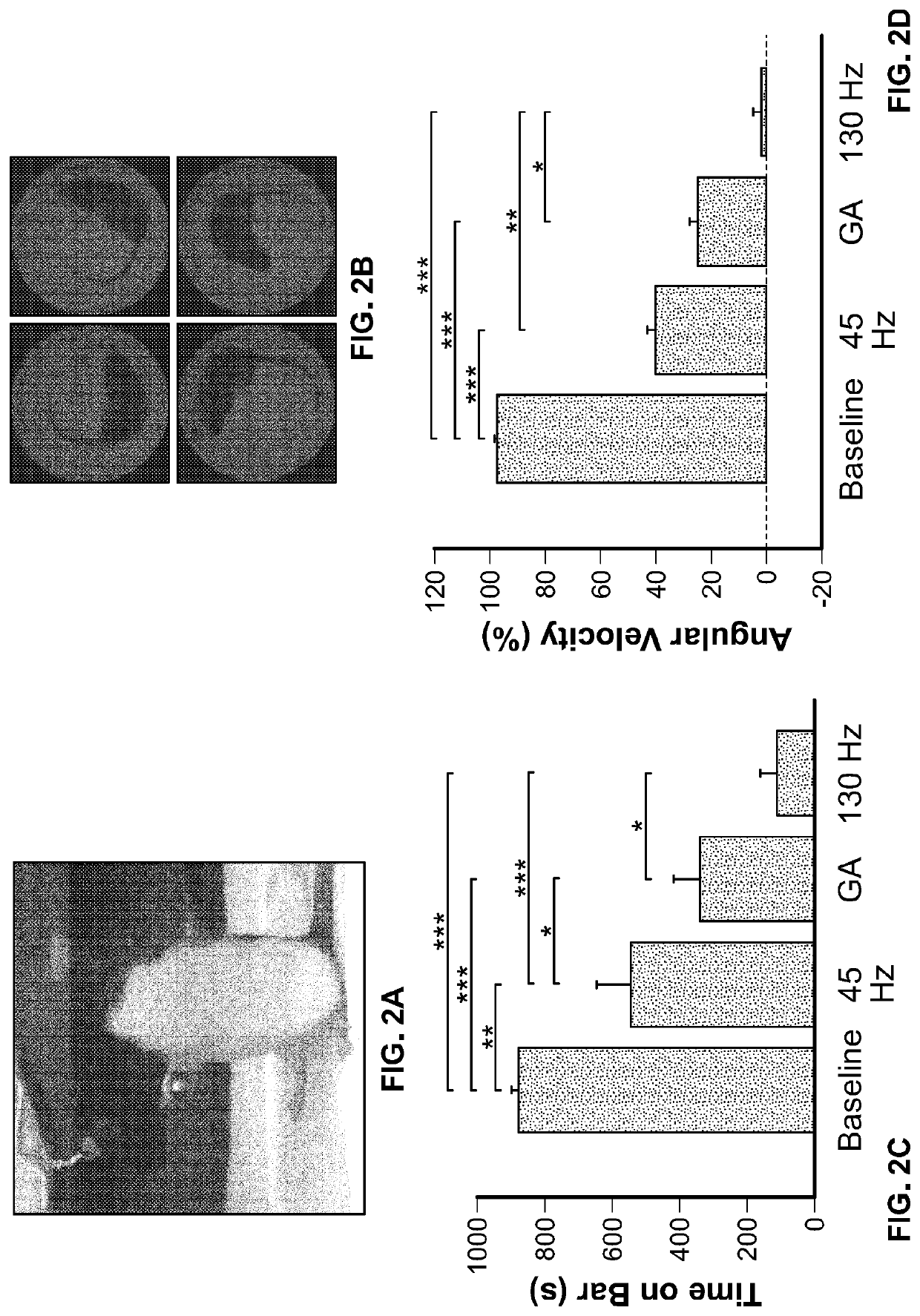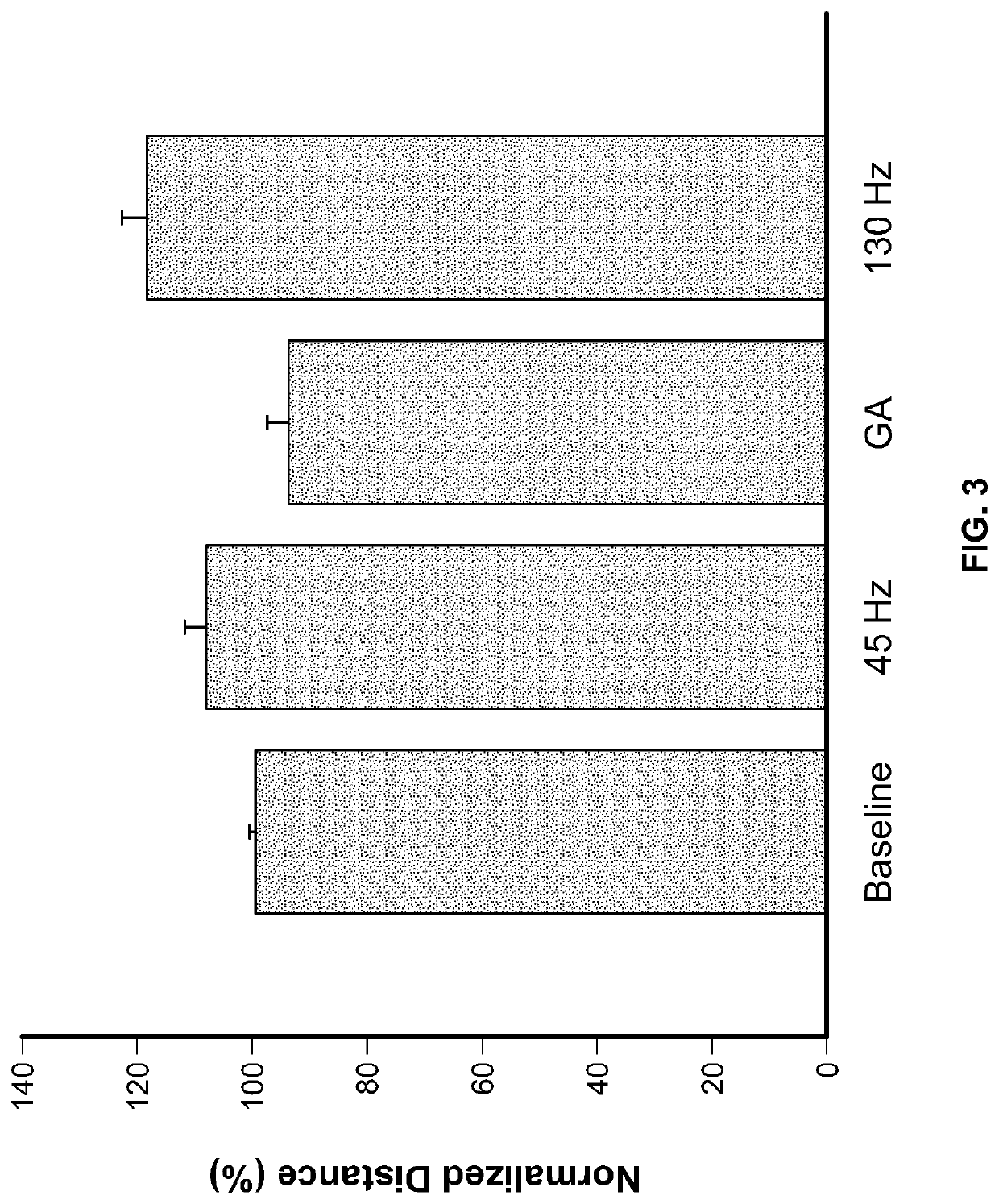Method to design temporal patterns of nervous system stimulation
a technology of temporal pattern and nervous system, applied in the direction of instruments, artificial respiration, therapy, etc., can solve the problems of complex long-term use, few improvement in dbs, and therapy has not been optimized, and achieve the effect of short gaps
- Summary
- Abstract
- Description
- Claims
- Application Information
AI Technical Summary
Benefits of technology
Problems solved by technology
Method used
Image
Examples
examples
[0046]Optimized Temporal Pattern of Stimulation Designed by Computational Evolution:
[0047]Brain stimulation is a promising therapy for several neurological disorders, including Parkinson's disease. Electrical stimulation, however, can also be used to treat many other disorders, diseases and symptoms. These may include, without limitation, applying electrical stimulation to treat pain (in any part of the body), mental disorders, incontinence, headaches, to rehabilitate a patient and the like. Stimulation parameters are selected empirically and are limited to the frequency and intensity of stimulation. The present invention utilizes a temporal pattern of stimulation as a novel parameter of deep brain stimulation to ameliorate symptoms in a parkinsonian animal model and in humans with Parkinson's disease along with other diseases, symptoms, and disorders. Further, it should be understood that while deep brain stimulation is discussed throughout the application, the present teachings an...
PUM
 Login to View More
Login to View More Abstract
Description
Claims
Application Information
 Login to View More
Login to View More - R&D
- Intellectual Property
- Life Sciences
- Materials
- Tech Scout
- Unparalleled Data Quality
- Higher Quality Content
- 60% Fewer Hallucinations
Browse by: Latest US Patents, China's latest patents, Technical Efficacy Thesaurus, Application Domain, Technology Topic, Popular Technical Reports.
© 2025 PatSnap. All rights reserved.Legal|Privacy policy|Modern Slavery Act Transparency Statement|Sitemap|About US| Contact US: help@patsnap.com



